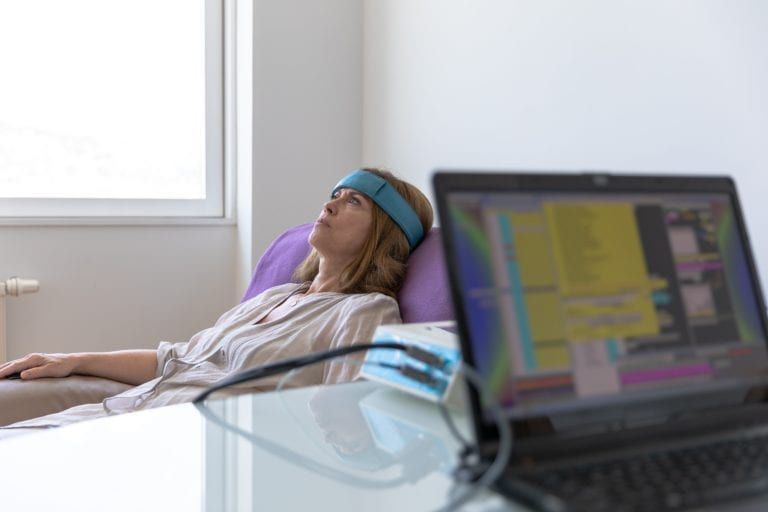What Is Biofeedback?

Biofeedback is a method of controlling various aspects of your body’s functioning, including things like heart rate. While you’re learning to use this process you’ll be attached to a variety of electrical sensors that will provide information about whats going on with your body to aid you in perfecting the technique. Once you’ve mastered this process you’ll be able to subtly alter the state of your body to achieve desired results. This can include causing muscles to relax so you can relieve the pain they’re causing.
Forms Of Biofeedback
A variety of forms of this technique exist, and which one you end up using is dependent on your goals and the decision made between you and your therapist. The forms of biofeedback available include:
-
Brain Wave – Sensors attached to your scalp monitor brain activity using an EEG, or electroencephalograph.
-
Breathing – Using this method involves placing a band around your chest and abdomen to monitor your patterns of breathing to gather respiratory information.
-
Heart Rate – Sensors attached to your earlobes or fingers detect changes in blood flow and volume. In some cases, the sensors will be placed on your chest, wrists, or lower torso to monitor your heart rate.
-
Muscle Contraction – Using sensors placed above your skeletal muscles an EMG monitors the activity in your spines that cause contraction.
-
Sweat Gland Activity – Your wrist and palm will be fitting with sensors that feed information to an Electrodermograph (EDG) to measure how active your sweat glands are and how much you’re perspiring. These can indicate levels of anxiety.
-
Temperature – Blood flow in your feet and fingers are measured using sensors to identify dips in temperature, an indication of stress. When your temperature drops you can begin utilizing relaxation techniques to counter it.
What Kind Of Devices Are Available to Aid With Biofeedback
Physical therapy clinics, hospitals, and medical centers can all have staff available to help teach you the techniques involved in biofeedback. Additionally, there is a growing number of devices available for use in the home, including:
-
Interactive Computer Programs – Some of these symptoms measure changes in your body including skin changes, heart rate activity, etc. The sensors are then plugged into your computer to produce prompts and graphics that you use to utilize the techniques you’ve been taught.
-
Wearable Devices – These devices monitor your body functions to identify periods of prolonged tension to guide you to practice biofeedback techniques.
If you’re interested in learning more about biofeedback and want to get some guidance on how it can benefit you, it’s time to speak to Dr. Todd Bromberg at Delaware Valley and Spine in Chalfont, PA. Their team of experts has been working closely with patients seeking to improve their lives through the use of biofeedback, and they’re ready to help you do the same. These techniques have been helping people just like you tackle the pain they experience from tension, muscle spasming, and more. Find out how biofeedback can help you call today!


Recent Comments